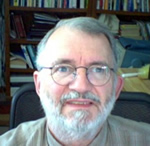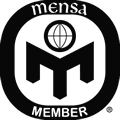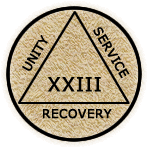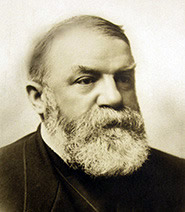Selected portions of the BloostonLaw Telecom Update, and/or the BloostonLaw Private Users Update — newsletters from the Law Offices of Blooston, Mordkofsky, Dickens, Duffy & Prendergast, LLP are reproduced in this section with the firm's permission. 
| BloostonLaw Telecom Update | Vol. 16, No. 19 | May 29, 2013 |
Tensions Flare between Vitter and TracFone over Lifeline Legislation Legislative news outlet The Hill reports that Sen. David Vitter (R-La.) and TracFone Wireless are butting heads over recently proposed legislation aimed at ending the cellular phone subsidy. As reported in the May 15, 2013 edition of the BloostonLaw Telecom Update, Vitter introduced legislation into the Senate that would prohibit Lifeline funds from being used to subsidize cellular phones entirely. Readers will also recall that just one day before Vitter introduced his anti-cellular Lifeline bill, TracFone filed a Petition for Rulemaking asking the FCC to amend its Lifeline rules to prohibit in-person distribution of handsets to prospective Lifeline consumers, instead requiring carriers to verify the eligibility of the customer first. According to the article, TracFone ran an advertisement in New Orleans attacking Vitter and his bill, claiming that, "Lifeline's wireless benefit was born out of Katrina ... Senator David Vitter must have forgotten." The Hill goes on to report that Vitter responded with, "a sardonic "thank you" to TracFone for paying for an ad that draws attention to 'this out-of-control, fraud-ridden entitlement program,'" before proceeding to claim TracFone's ad was misleading for a number of reasons. Headlines Comment Date Set on VoIP, NG911 and Wireline to Wireless Trials Comments are due on July 8, 2013 and reply comments are due on August 7, 2013 on the trials proposed by the FCC's Technology Transitions Policy Task Force to examine issues and gather data related to the ongoing transitions from wireline to wireless service, time-division multiplexing (TDM) to internet protocol (IP), and the implementation of next generation 911 (NG911) in GN Docket No. 13-5, originally reported in the May 15, 2013 of the BloostonLaw Telecom Update. While participation in the trials will be voluntary for communications providers, carriers should anticipate that the trials will be used to generate data that will support the goals of carriers like AT&T and Verizon and the FCC, including the sunset of TDM and its regulatory environment and the promotion of wireless-only service for high cost rural areas. As previously reported, the VoIP trial is intended to gather real-world data on the need and scope for technical or industry standards for the exchange of voice traffic in Internet protocol formats, including data to evaluate which policies to implement with regard to physical points of interconnection, pricing, transit, numbering and number portability, service level agreements, quality of service, and other terms and conditions. In the wireline-to-wireless trial, the FCC asks whether the LEC should be able to force all residential and business customers in the trial area to move from wireline voice and broadband products to a wireless only product. The trial would then evaluate the benefits of such a transition in terms of quality and terms of service, price, product functionalities, E-911 performance, accessibility options, reliability, and potential carrier cost savings in the delivery of voice and data services to higher cost areas. The NG911 trial will deploy an "all-IP" NG911 service on an accelerated basis in a number of geographic areas where public safety authorities are already prepared to deploy NG911 for one or more PSAPs (the Task Force is also seeking comment on what areas would be appropriate for such a test). The Task Force also seeks comment on the impact of consumer migration to wireless and IP-based services that are dependent on commercial power and network resiliency and public safety services generally. FCC Announces Five VoIP Numbering Trial Proposals Submitted On May 23, 2013, the FCC released a Public Notice announcing that it has received five numbering proposals to participate in a six-month technical trial of direct access to telephone numbers by Voice over Internet Protocol (VoIP) providers. As reported in the April 24, 2013 edition of the BloostonLaw Telecom Update, the FCC released an Order on April 18 establishing a six-month technical trial of direct access to telephone numbers by granting a conditional waiver to Vonage Holdings Corp. (Vonage) and other interconnected VoIP providers that had pending petitions for waiver of Section 52.15(g)(2)(i) of the Commission's rules (and that otherwise meet the terms and conditions outlined in the Order). Specifically, the numbering proposals must (1) include a certification that the provider will comply with the terms and conditions of the six month trial waiver, including any FCC and State reporting requirements, (2) identify the rate centers or LATAs in which the provider wishes to have numbers directly assigned, and note how many numbers it proposes to receive as new numbers and to port in from existing or new customers, and (3) detail the phase-in process to implement the trial. Proposals were submitted by Vonage, SmartEdgeNet, LLC, WilTel Communications, LLC (a wholly owned subsidiary of Level 3 Communications, LLC), Intelepeer, Inc., and Millicorp. Vonage's proposal included LATAs in Georgia, Massachusetts, Arizona; SmartEdge's proposal included LATAs in Florida and Texas; WilTel's proposal included LATAs in Massachusetts, North Carolina, Texas, Colorado, California, and New York, and Milicorp's proposal included LATAs in Florida and Georgia. Intelepeer's filing redacted this information. According to the Public Notice, each of the proposals will be approved thirty days after its respective filing date unless the FCC finds that the proposal fails to comply with the requirements of the Order. Specifically, the FCC may reject any proposal from a provider that is currently "red-lighted" by the FCC, is out of compliance with any FCC obligation, or is "otherwise determined to pose a risk that is not outweighed by the benefits of permitting the VoIP provider to participate in the trial." NOTE: FCC goes electronic for FY2014, changing how carriers make fee payments! The Commission has also announced various administrative changes that will be effective October 1, 2013 for FY2014. These changes involve the annual mailing of CMRS assessments to wireless carriers and the acceptance of manual payments for regulatory fee payments. As a result, starting next year, our CMRS clients will need to log into the FCC's Fee Filer Program to view the CMRS Regulatory Fee Assessment. Additionally, as part of the U.S. Treasury's paperless initiative, the FCC will no longer accept manual paper checks and the Form 159 Remittance Advice for the payment of regulatory fees. Instead, the FCC will require that regulatory fees be paid electronically by credit card, wire transfer or ACH payment. The FCC has stated that any other form of payment will be rejected and sent back to the payor — which could result in the imposition of late fees and other penalties. In order to get ready for next year, we recommend that our clients consider using electronic payments this year. Additionally, for those of our clients who have used our office to make the regulatory fee payments, we have been utilizing the FCC's electronic payment system to make the payments. The FCC is also working with the US Treasury to implement procedures that will reduce its accounts receivable and increase its recovery of unpaid regulatory fees. As part of this effort, the FCC is planning to transfer unpaid regulatory fees to the US Treasury for collection action at the end of the window for annual regulatory fee payments instead of waiting for a period of 180 days from the "delinquency date" as is the current practice. As part of this change, delinquent regulatees will see different notifications, including instructions on making delinquent payments directly to the US Treasury or its designated collection agent rather than to the FCC. While the FCC has not indicated when this year's filing window for annual regulatory fee payments will open, we anticipate that it will either be in late August or early September as in past years. It is important to note that regulatory fees are payable as of the first day of the fiscal year (October 1) even though they are not actually collected until the FCC opens the filing window. 
Law & Regulation FCC Seeks Comment on LNP Passcodes and Provisioning Flows In a Public Notice released May 22, 2013, the FCC sought comment on the North American Numbering Council (NANC) request for clarification of the use of passcodes for non-simple ports and local number portability (LNP) provisioning flows. Comments are due June 5, 2013. In 2010, the FCC adopted LNP provisioning flows, which included a one-business day porting interval for simple ports of a subscriber's telephone number from one service provider to another. In adopting these process flows, the FCC indicated that carrier-assigned passcodes for a customer's account may not be required to be supplied by a new provider in order to obtain a customer service record (CSR) from another provider, and that the adopted porting flows would remain in effect until the NANC recommended, and the FCC approved, revised provisioning flows for the porting process. In a letter filed September 19, 2012, the NANC asked the FCC to clarify that the LNP flows and recommendations apply to all ports, not just simple ports, thereby prohibiting the use of a carrier-initiated passcode for any porting request. In a second letter dated December 10, 2012, the NANC asked the FCC to adopt clarifying revisions to LNP provisioning flows for cancellations and disconnections. 
Industry Senators Urge FCC To Consider Security Risk Of Sprint-Softbank Deal "As I am sure the Commission is aware, Sprint holds strategic assets, such as its wireless spectrum and fiber network, and has extensive and ongoing relationships throughout the whole government," McCain wrote. "With all other relevant facts and circumstances surrounding Softbank's proposed acquisition of Sprint, I hope the Commission duly considers these facts when reviewing this matter." Sen. Schumer's letter, which was also sent to Treasury Secretary Jack Lew, was more direct. "There are several reasons this deal requires careful scrutiny," Schumer wrote. "SoftBank, which proposes to acquire Sprint as well as its spectrum, is a Japanese company with alleged ties to China, the country that is currently the leading source of cyber breaches." The letters came as the California Public Utilities Commission last week voted to approve the transaction, giving the companies the final state approval needed to close the deal. The companies filed applications in 23 states and the District of Columbia. Industry watchers believe that Dish Network is behind this latest campaign to frame SoftBank's $20.1 billion offer for a 70% stake in Sprint as a national security issue. Dish proposed a $25.5 billion rival bid in April and is seeking to trump the Japanese firm's offer. However, to address these security concerns, SoftBank has promised not to use Chinese telecommunications equipment in its networks, and it has reportedly also agreed to allow the U.S. government to approve. But these same insiders also think that Dish's 11th hour efforts may come as too little, too late. Dish representatives, including CEO Charlie Ergen, attended ex parte meetings on the FCC's Eighth Floor last week, urging the Commissioners to hold the merger proceeding in abeyance while the Sprint Board of Directors consider Dish's competing offer. Yesterday marked day 180 of the FCC's non-binding 180-day timeline for completing reviews of mergers and acquisitions, so we would not be surprised if a proposed order approving the deal has already been written and is circulating among acting Chairman Mignon Clyburn, Commissioner Jessica Rosenworcel and Commissioner Ajit Pai. Google Looks to Get Emerging Markets Online The Wall Street Journal is reporting that Google. Inc. is deep into a broad-based effort to bring internet service for the first time to a billion or more new people in emerging markets such as sub-Saharan Africa and Southeast Asia. The company has a variety of projects underway, in both rural and urban areas, but it reportedly plans to use TV white space spectrum in areas where government regulations allow, and to team up with local telecom firms and equipment providers to develop the networks and create business models to support them. "White space has the advantage that low frequency signals can travel longer distances," said the Company in a Google Africa Blog posting this past Spring. "The technology is well suited to provide low cost connectivity to rural communities with poor telecommunications infrastructure, and for expanding coverage of wireless broadband in densely populated urban areas." As part of the larger initiative, Google is said to be developing an ecosystem of microprocessors and low cost Android smartphones through its Motorola Mobility operating unit (which it acquired in May of 2012), and it has been working with telecom regulators in South Africa and Kenya to modify their regulations so that use of unlicensed TV white space spectrum is permitted. According to the Journal's article, Google has also worked "on making special balloons or blimps, known as high-altitude platforms, to transmit signals to an area of hundreds of square miles, though such a network would involve frequencies other than the TV broadcast ones." A Google Africa field trial launched in Cape Town this past March uses white space technology from three terrestrial transmitters to serve ten nearby schools. A goal of the trial is to show that broadband can be offered over white spaces without causing interference to with licensed spectrum operations. The network uses Google's spectrum database to determine white space availability. While it is unknown whether Google has plans to use high-altitude platforms to deploy services outside the developing world, the company was chosen as one of several TV white space database administrators in the United States, and along with Microsoft Corporation has been instrumental in shaping policies and rules applicable to white space operations in the US. Testing of TV white space equipment and networks in developing markets would certainly have applicability in the US as well, where white space research and development have been complicated by FCC plans to "repack" broadcasters into a smaller portion of the TV broadcast band and to license broadcast spectrum that has been voluntarily returned to the FCC to be awarded to wireless carriers in "incentive" auctions. The use of terrestrial white space networks in some areas and licensed aerial networks in other areas would also be consistent with Google statements that "there's not going to be one technology that's a silver bullet." In this regard, Google has recently deployed a gigabit fiber internet service in Kansas City and the Company bid for the Upper 700 MHz D-Block license in FCC Auction No. 73 to ensure that open access conditions that it lobbied for would be applicable to the spectrum, which is now held by Verizon Wireless. News reports from last year indicated that Google was in talks with Dish Network to help Dish deploy a terrestrial 700 MHz network, and Google's January 2013 FCC application for a 2.5 GHz experimental radio network at the Company headquarters in Mountain View, CA, led to speculation that Google could be working on last-mile technologies and services in conjunction with Clearwire Corp. to better compete with Verizon and AT&T. 
Deadlines AUGUST 1: FCC FORM 502, NUMBER UTILIZATION AND FORECAST REPORT: Any wireless or wireline carrier ( including paging companies ) that have received number blocks—including 100, 1,000, or 10,000 number blocks—from the North American Numbering Plan Administrator (NANPA), a Pooling Administrator, or from another carrier, must file Form 502 by August 1. Carriers porting numbers for the purpose of transferring an established customer's service to another service provider must also report, but the carrier receiving numbers through porting does not. Resold services should also be treated like ported numbers, meaning the carrier transferring the resold service to another carrier is required to report those numbers but the carrier receiving such numbers should not report them. Reporting carriers file utilization and forecast reports semiannually on or before February 1 for the preceding six-month reporting period ending December 31, and on or before August 1 for the preceding six-month reporting period ending June 30. 
Calendar At-A-Glance May 31 — FCC Form 395, Employment Report, is due.
May 31 — Reply Comments on Petition filed by a group of competitive carriers asking the FCC to Reverse Forbearance for Special Access are due.
Jun. 3 — Comments/Oppositions to Rural Associations Petition for Reconsideration of Sixth Order on Reconsideration are due.
Jun. 3 — Comments/Oppositions on USTelecom Petition for Reconsideration of 54.313 Reporting Requirements are due.
Jun. 5 — Comments are due on LNP Passcode and Provisioning Flow Public Notice.
Jun. 8 — Electronic filing deadline for Form 497 for carriers seeking support for the preceding month and wishing to receive reimbursement by month's end.
Jun. 11 — Reply Comments on Options for Disposition of UHF T-Band (470-512 MHz) are due.
Jun. 11 — Replies to comments/oppositions to Rural Associations Petition for Reconsideration of Sixth Order on Reconsideration are due.
Jun. 11 — Replies to comments/oppositions USTelecom Petition for Reconsideration of 54.313 Reporting Requirements are due.
Jun. 11 — Reply comments on Rural Call Completion are due.
Jun. 14 — Comments on Broadcast TV Incentive Auction NPRM are due.
Jun. 17 — Comments on TracFone Petition for Rulemaking Prohibiting Distribution of Lifeline Handsets are due.
Jun. 19 — Comments are due on 2013-2014 Regulatory Fee Structure NPRM.
Jun. 26 — Reply comments are due on 2013-2014 Regulatory Fee Structure NPRM.
Jun. 28 — Deadline for State Commissions to submit and certify the data included in shapefiles.
Jun. 28 — Reply comments on Broadcast TV Incentive Auction NPRM are due.
Jul. 1 — Annual High Cost ETC Report Due under Rule 54.313.
Jul. 1 — Annual Mobility Fund Phase I Report Due under Rule 54.1009
Jul. 2 — Reply comments on TracFone Petition for Rulemaking Prohibiting Distribution of Lifeline Handsets are due.
Jul. 8 — Electronic filing deadline for Form 497 for carriers seeking support for the preceding month and wishing to receive reimbursement by month's end.
Jul. 8 — Comments are due on VoIP, NG911, and Wireline-to-Wireless Transition Trials.
July 16 — Paperwork Reduction Act Comments on Proposed Collection of Urban Rates Survey Information are due.
Jul. 25 — Comments are due on the FCC Staff Report on Rate of Return Re-Prescription.
Jul. 31 — FCC Form 507 due (Universal Service Quarterly Line Count Update).
Jul. 31 — FCC Form 525 due (Competitive Carrier Line Count Quarterly Report). | BloostonLaw Private Users Update | Vol. 14, No. 5 | May 2013 |
Tom Wheeler Nominated to FCC Chair President Obama has officially nominated Tom Wheeler as the next FCC Chairman. Leading up to the announcement, Reuters, Bloomberg and the Wall Street Journal Online all ran articles indicating that Obama would give Wheeler the nod. According to Reuters, "[Wheeler] has the rare support of both industry groups and a number of consumer advocates." Bloomberg reported on a number of issues currently before the FCC upon which Wheeler has, in the past, gone on record, including whether to limit the amount of spectrum a company can hold in a given area (Wheeler pushed for elimination of a cap in 2001), whether US standards on cellular radiation need to be updated (Wheeler indicated no connection between cancer and mobile phone use had been established in 1999), and whether AT&T should be able to merge with T-Mobile (Wheeler supported the merger, suggesting it was an opportunity to regulate broadband through conditions, in a 2011 letter). While Wheeler's appointment is pending confirmation, Mignon Clyburn, an FCC Commissioner since 2009, will act as interim chairwoman. FCC Unsympathetic to Failed Do-it-Yourself Attempts to Renew Licenses — Denies Waiver Requests The FCC has recently denied waiver requests that would have permitted the filing and acceptance of late-filed applications for renewal of licenses. In both instances, inadvertent errors involving the FCC's Universal Licensing System resulted in the expiration of the licenses. In the first case, the licensee intended to file an application for renewal and modification of its license the day before the license expiration. Unfortunately, it only filed a request for Administrative Update to correct its licensee contact phone number and e-mail address. As a result, the license expired the very next day because a license renewal application had not been filed. In the second case, the licensee discovered a few days after the license expiration date that it had inadvertently overlooked the filing of the license renewal application and immediately filed a request for waiver of the FCC's rules for reinstatement of the license. Unfortunately, ULS reflects that while the second licensee filed its waiver request, it never actually filed the required application for renewal/reinstatement of the license. In both cases, the FCC concluded that even though the licensees had clearly made attempts to make the necessary renewal filing, they had not made an adequate showing to justify the grant of a waiver. While the FCC has taken steps to encourage licensees to make do-it-yourself filings, it is important to note that the FCC is not always forgiving when mistakes are inadvertently made. Aside from the licensing area, the FCC has also taken significant enforcement actions in connection with the annual CPNI and HAC reporting requirements associated with telecommunications services. Significant fines and loss of a license can also be imposed for allowing license authorizations to expire or not making other required filings in a timely manner. We are available to assist you with your various regulatory filings. However, if you chose to make filings on your own, please contact us if you have any questions. FCC Holds Licensee Liable for Tower Violations, Despite Claim of Non-Ownership The FCC has imposed an $11,000 fine on Ely Radio, LLC, for failing to ensure that the tower lighting was in proper working order. At the time of the violation, Ely Radio, LLC was the licensee for Station KWNA (AM) in Winnemucca, Nevada. While the FCC's Rules impose primary liability on the tower owner, licensees should be aware that the FCC may hold all licensees on a tower jointly and severally liable for ensuring that the tower is in compliance with the FCC's rules. This secondary liability for licensees will generally occur where the tower owner is either unwilling to take action or the FCC is unable to locate the tower owner. This case has a unique twist since Ely claimed that while it had purchased the license for station KWNA (AM), it did not purchase the antenna tower. This claim was contrary to the seller's position, who claimed that the purchase agreement between the parties included not only the station itself, but "all of the equipment necessary" to run the station – including the tower. In the face of this contractual dispute, the FCC determined that Ely owned the tower and had also violated the FCC's rules since it did not make a filing to reflect the ownership change. Bolstering the FCC's conclusion that Ely was liable – irrespective of whether Ely was the tower owner, was the fact that (a) Ely was the only user on the tower, (b) Ely had access to and control over the tower lighting, (c) it was Ely's personnel that had improperly extinguished the tower lighting and (d) Ely knew that the seller had taken the position that the tower was included as an asset in the transaction and that the seller had not been involved in the maintenance of the tower since the station had been sold to Ely. There are several lessons that can be learned from this case, including: 1. Notify the FCC promptly if you purchase an antenna tower or structure that is registered with the FCC.
2. Ensure that your purchase agreement clearly identifies the specific assets that are included or not included in your transaction.
3. While tower owners are primarily responsible for compliance with the FCC's tower marking and lighting rules, there may be circumstances where the licensees can be held liable. As a result, licensees should ensure that the tower owner is fulfilling its obligations. In this regard, if the FCC is unable to get a response from the tower owner, it may look to the licensee(s) to correct the deficiency (and pay any fines!).
4. It is critically important to maintain obstruction marking and lighting in order to protect safety to air navigation.
FCC Enters Into $450K Consent Decree Against Radio Manufacturer The FCC has entered into a consent decree whereby New Sensor Corporation d/b/a Electro Harmonix will contribute $450,000 to the US Treasury, as a result of issues relating to the sale of digital RF devices, such as bass amplifiers and vocal processors. The FCC initiated an investigation of New Sensor when it determined that the company was marketing devices that were classified as "unintentional radiators" (i.e., generating RF not to send communications signals but incidental to some other purpose), yet had not met the FCC's authorization and labeling requirements. New Sensor stated to the FCC that it was unaware of FCC regulation of such devices. Clients that manufacture, market or sell any devices that include any sort of electronics, even if not intended to act as a communications device, should be aware of the need to comply with the FCC's filing and labeling requirements for unintentional radiators. FCC Adopts Revised and Streamlined Rules for the Experimental Radio Service effective May 29, 2013 On April 29, 2013, the FCC published its new rules in the Federal Register (Volume 78, No. 82). These new Rules significantly change some aspects of the Part 5 Experimental Radio Service (ERS) requirements. The new Rules were set forth in the FCC's Report and Order, ET Docket No. 10-236 and 06-155, FCC 13-15, adopted and released on January 31, 2013. The rule changes will go into effect on May 29, 2013. It is anticipated that the revisions should create a more flexible framework to support the rapid pace of technological innovation and to further implement the recommendations of the Commission's March 2010 National Broadband Plan. To carry out this transition, the Commission created three new types of experimental licenses to advance the development of new technologies, expedite their initiation into the marketplace, and unleash the full power of innovators to keep the United States at the forefront of the communications industry. The Commission's actions also revise the market trial rules to eliminate confusion and more plainly express its policies with respect to marketing products prior to equipment certification. The three new types of experimental licenses include: 1) Program experimental license : This license will allow colleges, research laboratories, health care institutions, and manufacturers with demonstrated experience in RF technology to conduct an ongoing series of research experiments and tests.
2) Medical testing license : This license will be available to health care facilities with RF expertise to assess newly developed RF-based medical devices for patient compatibility, electromagnetic compatibility, and to conduct clinical trials at patients' homes or in other geographic areas that are not within the health care licensee's control.
3) Compliance testing license : This license will provide Commission-recognized laboratories the flexibility to undertake RF product compliance testing under the Commission's equipment authorization procedures.
Along with the new flexibility, the Commission will also ensure that critical services (i.e. commercial mobile radio services, emergency notifications, and public safety radio services) are protected by requiring experimenters using this augmented authority to provide notice to such licensees, and to develop a specific plan to avoid harmful interference to those operations. In addition, as with current experimental licenses, experimentation under these new licenses must be accomplished on a non-interference basis. Finally, the Commission will create a new web-based registration system to track and administer individual experiments for program and medical testing licenses. All experimental radio provisions will be consolidated into Part 5 of the Commission's Rules by creating a new sub-part for broadcast experiments and eliminating the developmental licensing rules that are scattered across multiple Commission rule parts. The Commission also clarified, simplified, and expanded the existing ERS rules that provide for market trials, including allowing a greater number of RF devices to enter the U.S. for testing and evaluation purposes. West Virginia Dept. Health Granted Waiver to Use UHF Industrial Pool Frequencies for Public Safety Communications System The West Virginia Department of Health and Human Resources/Bureau of Public Health/State office of Emergency Medical Services filed fifteen applications which specified the use of Industrial/Business Pool UHF channel pairs at various locations throughout the State of West Virginia. West Virginia currently operates a state-wide interoperable communications system comprised of a UHF digital Project 25-compliant, trunked radio system. This system currently has approximately 15,000 radios and serves 530 agencies through 63 transmitter sites across the state. West Virginia is proposing an additional 22 sites over the next two years. In order to complete the build out, West Virginia needs six channel pairs at each site in order to meet current and future public safety communications needs. West Virginia initially attempted to coordinate its frequency request through APCO, but was informed that no UHF frequency pairs were available. As a result, West Virginia worked with PCIA, and Industrial/Business Pool frequency coordinator to identify possible Industrial/Business Pool frequencies that might meet the state's requirements. In order to justify a waiver, West Virginia must demonstrate, among other things, that there are no suitable alternatives that would meet its needs. In this regard, West Virginia demonstrated that its system is based upon UHF architecture and that integrating 700/800 MHz into its system would be unduly expensive and that the 700/800 MHz band does not have propagation characteristics that are usable given West Virginia's unique geographic topography. Additionally, given the fact that West Virginia has already deployed a UHF trunked system throughout the state with 15,000 subscriber units, it would not be cost effective to replace these radios since they are incompatible with the 700/800 MHz band. West Virginia also concluded that the VHF band would not be suitable since the VHF band consists of unpaired frequencies that are not suitable for trunking. In granting the waiver, the FCC gave great weight to PCIA's conclusion that a grant of West Virginia's applications would "not create an inadequate supply of Industrial/Business channels for use in conventional or trunked systems in the relevant geographic areas for future Industrial/Business Pool eligible applicants." As a result, the FCC concluded that a grant of West Virginia's frequency request would not result in an inadequate supply of spectrum for the industrial/business community. United States and Canada Reach Agreement on Spectrum Sharing in the Border Region The FCC and its Canadian counterpart, Industry Canada have reached an agreement on ten interim spectrum sharing arrangements that cover various frequency bands along the US/Canadian border area. Among the sharing arrangements is an agreement covering the 700 MHz band that will allow public safety licensees on both sides of the border to fully implement their 700 MHz narrowband systems by "harmonizing" the US and Canadian public safety 700 MHz channel plans to provide "efficient, interference-free public safety operations in the border area." The agreement also includes the 3650-3700 MHz band which will allow the deployment of wireless broadband and high-speed internet services to coexist on both sides of the US-Canadian border through the use of "contention-based protocols" to avoid harmful interference while sharing the spectrum. The "contention-based protocols" will allow multiple users to share the same spectrum by defining the events that must occur when two or more devices attempt to simultaneously access the same channel and establishing the rules by which each device is provided a reasonable opportunity to operate. The "contention-based protocols" are incorporated into, and thus automatically implemented by, the system equipment. The US and Canada have also agreed to several other spectrum sharing arrangements that involve the Personal Communications Services, Advanced Wireless Services, public safety operations in the 4.9 GHz band and railway communications systems. Additionally, the arrangements concluded by the US and Canada also provide for coordination and sharing protocols for spectrum used for Wireless LAN, Mesh Network and Wi-Fi hotspots, fixed point-to-point/multipoint services and broadband traffic. | 
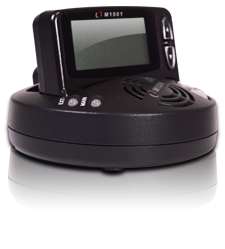

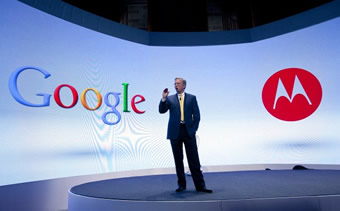









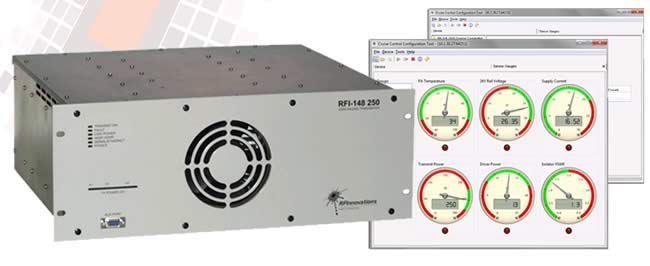
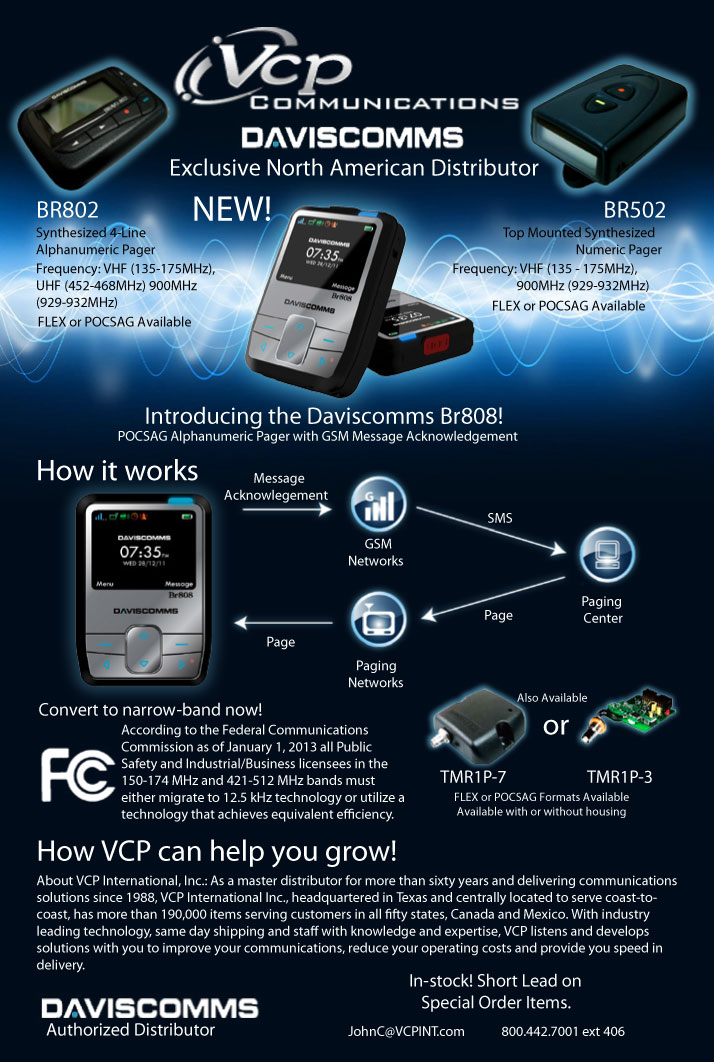
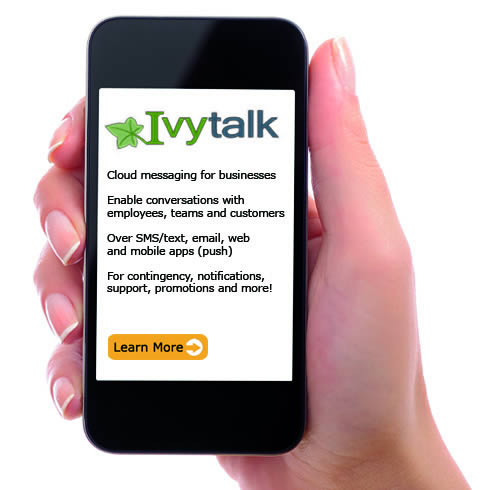
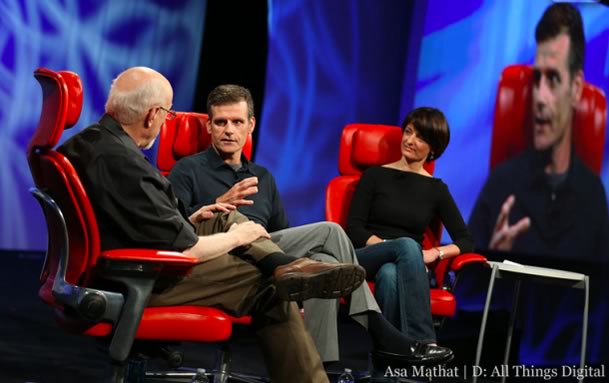






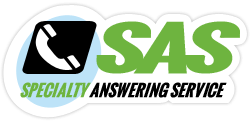




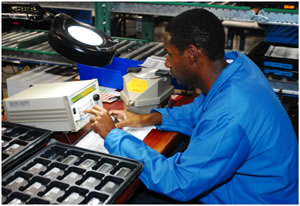
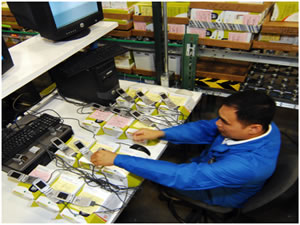



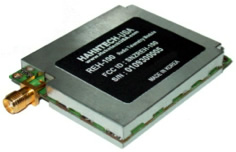






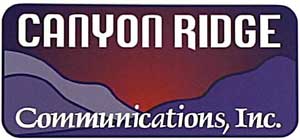





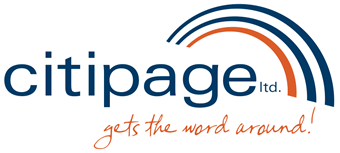
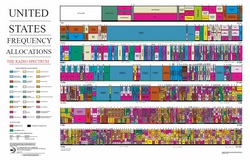





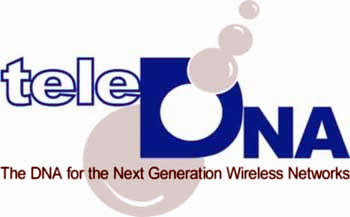



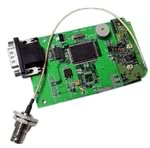


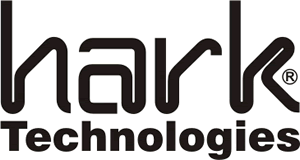
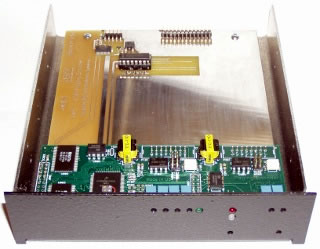

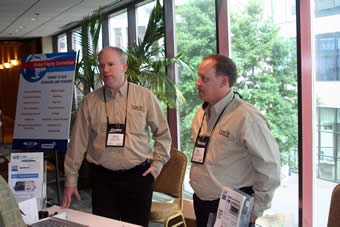 David George and Bill Noyes
David George and Bill Noyes
 Hi, I want to let you know about an amazing offer and service that I'm really excited about. Check this out —
Hi, I want to let you know about an amazing offer and service that I'm really excited about. Check this out — 

